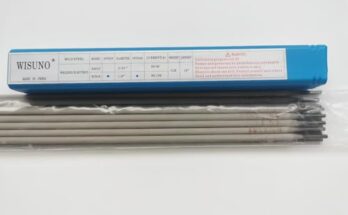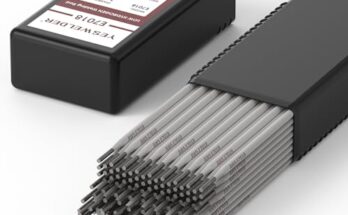Need to tackle a tough welding job? Let’s dive into the world of victory welding rods 6011, and what makes them a go-to choice for many welders. This article will cover everything from their core features to advanced applications, helping you understand when and how to best utilize these versatile rods.
Let’s begin
rods stand out. They’re a popular choice for various applications, but understanding their strengths and weaknesses is crucial for success.
What are Victory 6011 Welding Rods?
Victory 6011 welding rods are a type of low-hydrogen, all-position electrode designed for use with direct current electrode positive (DC+) welding. They are known for their exceptional penetration and ability to weld in various positions (flat, vertical, overhead) – a feature vital for diverse projects. Their core is composed of a flux-coated steel wire, offering strong arc stability and slag coverage. The flux not only helps protect the weld pool from atmospheric contamination, improving weld quality, but it also provides a stable arc, crucial for beginners. This prevents the common issue of inconsistent welds resulting in weak joints. In simpler terms, the flux acts as a shield, helping to create a consistent and clean weld. The 6011 designation indicates its specific composition and properties; we’ll explore that in more detail later.
Key Features and Benefits of Victory 6011 Rods
Victory 6011 rods offer several advantages that make them a versatile choice for welders. Their key features include:
* Excellent Penetration: They offer deep penetration, ideal for thicker materials and when a strong, robust weld is required. This deep penetration ensures a secure connection. Think of it like driving a strong screw deeply into the wood – the penetration ensures a firm hold.
* All-Position Welding: You can use them in any position, from flat to overhead, offering unmatched flexibility. This is a significant benefit for projects requiring welding in awkward or confined spaces. This versatility sets them apart from some other types of welding rods that are restricted to specific positions.
* Easy Arc Starting: The design of these rods makes arc striking straightforward, reducing the time and effort needed to begin welding. This is important, especially for beginners, as it lessens the frustrations often associated with starting an arc.
* Strong Arc Stability: The stable arc contributes to consistent weld beads and reduces the risk of interruptions during the welding process. A steady arc is crucial for a clean and efficient weld.
Comparing Victory 6011 with Other Welding Rods
While 6011 rods are excellent, they are not the only option. Choosing the right rod depends on the specific application. Let’s compare 6011 with a couple of other popular choices:
| Feature | Victory 6011 | 6013 | 7018 |
|---|---|---|---|
| Penetration | High | Medium | High |
| Position | All Position | All Position (But Better in Flat) | All Position |
| AC/DC Compatibility | DC+ | AC/DC | DC- |
| Weld Appearance | Rougher | Smoother | Very Smooth |
| Suitable for | Outdoors, Rust, Dirty Metal | General purpose, thinner metals | High strength structural steel |
As you can see, each rod type has its strengths. 6013, for instance, offers a smoother weld, but its penetration is less than 6011. 7018 produces extremely high-quality welds but requires specific conditions and expertise.
Applications of Victory 6011 Welding Rods
The versatility of Victory 6011 rods extends to a range of welding applications. Let’s delve into some common scenarios where these rods excel.
Welding Rusty or Dirty Metals
One of the significant advantages of 6011 rods lies in their ability to effectively weld rusty or dirty metals. The high penetration and the aggressive nature of the arc help to burn through the rust and impurities. I once had to repair a rusty gate, and the 6011 rods effortlessly cut through the surface rust, making for a solid, reliable repair. It’s a valuable asset when working outdoors on aged or neglected metal components.
Repairing Farm Equipment and Machinery
Many farmers and machinery owners rely on 6011 rods for repairing farm equipment. The strength and penetration make them perfect for repairing heavy-duty machinery. The rod’s ability to weld in all positions is also critical when working on complex or intricate pieces of equipment. I remember helping a neighbor fix his old tractor, and the 6011 rods performed flawlessly, even in the cramped space around the engine block.
Welding in Difficult-to-Reach Areas
Their adaptability to all welding positions is a game-changer when working in confined spaces or on overhead structures. Other rods might struggle in these situations, but the 6011’s performance remains consistently reliable. This was particularly beneficial when I was working on a rooftop repair project; the ability to weld comfortably overhead saved considerable time and effort.
Understanding the 6011 Designation
The “6011” designation itself contains valuable information about the rod’s properties. Let’s break down this seemingly cryptic code.
Decoding the AWS Standard
The American Welding Society (AWS) standard is a classification system for welding electrodes, and 6011 follows this convention. The “60” indicates the tensile strength of the weld metal, while the “11” specifies the electrode’s characteristics. The “1” signifies all-position capability, and the “1” also indicates that the electrode is suitable for AC current. While 6011’s primary use is with DC+, it can be used with AC in certain situations. However, DC+ is recommended for optimal results.
The Significance of Tensile Strength
The tensile strength of 6011 weld metal is 60,000 psi (pounds per square inch), highlighting its robust nature. This strength is crucial for applications requiring high durability and resistance to stress and strain. It’s a key factor in determining the rod’s suitability for heavier-duty projects.
Flux Composition and its Role
The flux coating on 6011 rods is a crucial component. It’s a blend of various minerals and chemicals that play a vital role in shielding the weld pool from atmospheric contamination, providing arc stability, and improving the overall quality of the weld. This flux facilitates the melting and flow of the electrode, producing a better fusion between the base material and the filler metal.
Safety Precautions When Using Victory 6011 Welding Rods
Safety is paramount when working with welding equipment, and using 6011 rods is no exception. Proper precautions must always be taken.
Personal Protective Equipment (PPE)
Always wear appropriate personal protective equipment (PPE), including a welding helmet with a suitable shade lens, welding gloves, protective clothing, and safety shoes. Eye protection is absolutely essential to prevent eye damage from arc flash. Don’t compromise on safety; your health is worth far more than saving on PPE.
Ventilation and Workspace
Ensure adequate ventilation in your workspace, as welding produces fumes and gases. Always work in a well-ventilated area, or use a respirator if necessary, particularly in confined spaces. This minimizes your exposure to harmful substances that welding generates.
Fire Hazards
Welding can create fire hazards, so always have a fire extinguisher readily available. Keep flammable materials away from the welding area and be aware of your surroundings. The high heat generated can easily ignite combustible materials, so caution is crucial.
Advanced Techniques and Considerations
For experienced welders, mastering advanced techniques can greatly enhance the quality of welds produced using Victory 6011 rods.
Controlling Arc Length and Travel Speed
Consistent arc length and travel speed are critical for achieving optimal welds. Practice helps develop the feel for maintaining the ideal arc length. Varying travel speeds can also affect the bead profile. Experience allows welders to fine-tune these factors to achieve desired weld characteristics.
Tacking and Weld Sequencing
Proper tacking, especially for larger projects, is crucial for ensuring alignment and preventing distortion during welding. This planning stage ensures the weld proceeds smoothly and avoids unnecessary corrections later.
Troubleshooting Common Issues
Even experienced welders encounter challenges. Let’s look at some common issues and potential solutions when working with 6011 rods.
Porosity
Porosity, the presence of small holes in the weld, can be caused by moisture in the rods or inadequate shielding. Drying rods and ensuring proper arc coverage can remedy this issue.
Excessive Spatter
Excessive spatter, caused by factors like incorrect arc length or high current settings, can impact the appearance of the weld. Adjusting the current and arc length can reduce spatter.
Maintaining and Storing Welding Rods
Proper maintenance and storage prolong the life of your welding rods and ensure optimal performance.
Drying Rods
Low-hydrogen electrodes, like 6011, require proper drying before use to remove moisture from the coating. Follow the manufacturer’s instructions regarding drying temperature and duration to prevent porosity.
Proper Storage
Store rods in a dry, airtight container to prevent moisture absorption. Moisture contamination greatly reduces their effectiveness.
Choosing the Right Equipment
The selection of your welding machine influences the performance of 6011 rods.
DC+ Welding Machines
6011 rods are ideally used with a DC+ (Direct Current Electrode Positive) welding machine. These machines provide the optimal arc characteristics for deep penetration.
Frequently Asked Questions
What is victory welding rods 6011 best for?
Victory 6011 rods are best suited for applications requiring high penetration, such as welding thicker metals, particularly outdoors or on rusty materials. Their all-position capability makes them ideal for difficult-to-reach areas. Learn more about the versatility of 6011 welding rods.
What are the drawbacks of using Victory 6011 rods?
While versatile, 6011 rods can produce a rougher weld bead compared to some other types, and they generally require more skill to achieve a clean, consistent weld than easier-to-use rods like 6013. Their weld might also be prone to excessive spatter.
How do I store Victory 6011 welding rods properly?
Store them in a cool, dry, airtight container to prevent moisture absorption. Failure to properly store them leads to increased porosity and diminished weld quality. Learn more about maintaining the life and performance of your welding rods.
What amperage should I use for Victory 6011 rods?
The amperage setting depends on the rod diameter and the thickness of the material being welded. Consult the manufacturer’s instructions for appropriate amperage ranges. Incorrect amperage can result in poor weld penetration or excessive spatter.
Can I use Victory 6011 rods on thinner metals?
While possible, it’s not ideal. The high penetration of 6011 rods might burn through thinner materials. For thinner metals, use electrodes designed for that purpose, like 6013 rods, which offer a lower penetration rate.
Are Victory 6011 welding rods suitable for all welding positions?
Yes, one of the key features of 6011 rods is their all-position capability. They can be used effectively in flat, vertical, horizontal, and overhead welding positions.
What type of welding machine is recommended for Victory 6011 rods?
A DC+ (Direct Current Electrode Positive) welding machine is recommended for optimal results with 6011 rods. This setting delivers the appropriate arc characteristics for deep penetration and weld quality.
Final Thoughts
Victory 6011 welding rods are a powerful and versatile tool for any welder’s arsenal. Understanding their characteristics, applications, and safety precautions is key to successfully employing them. Whether you’re a seasoned professional or a beginner, mastering the use of 6011 rods will enhance your welding capabilities significantly. Remember to always prioritize safety and proper technique to achieve strong, reliable welds. So grab your welding helmet, your 6011 rods, and get ready to create some amazing welds!


